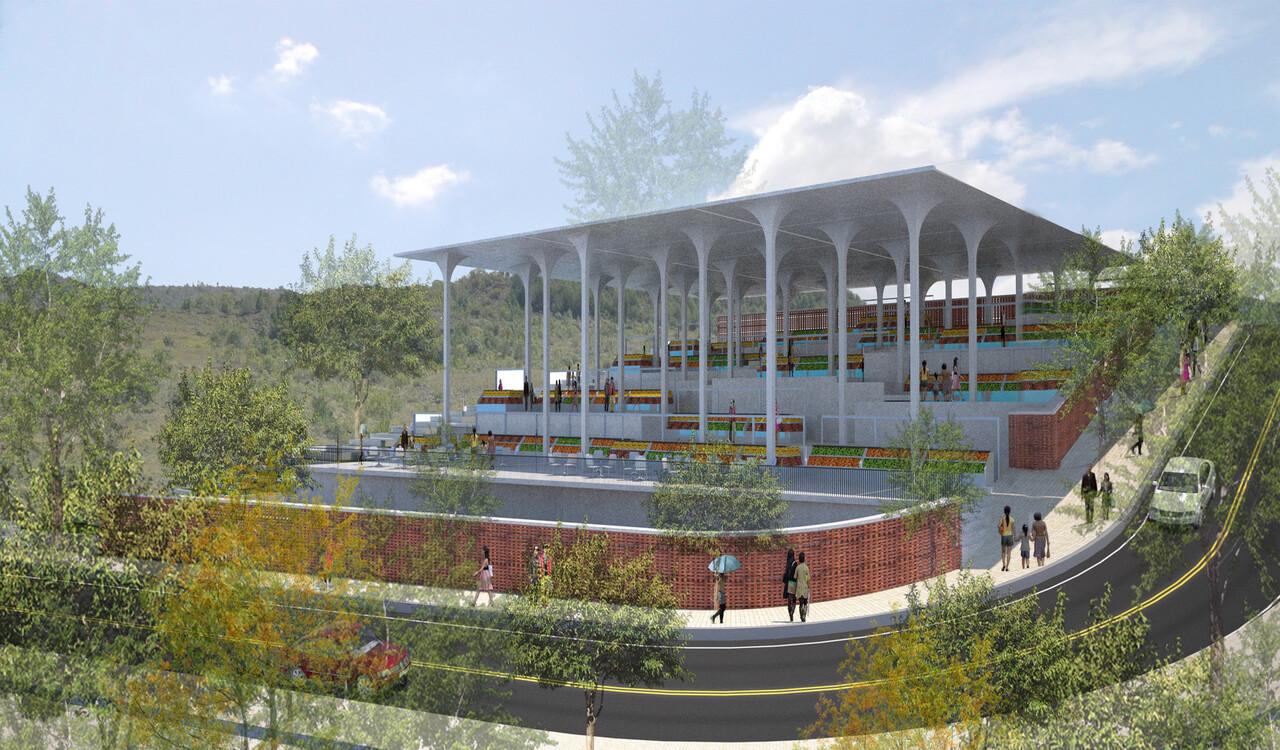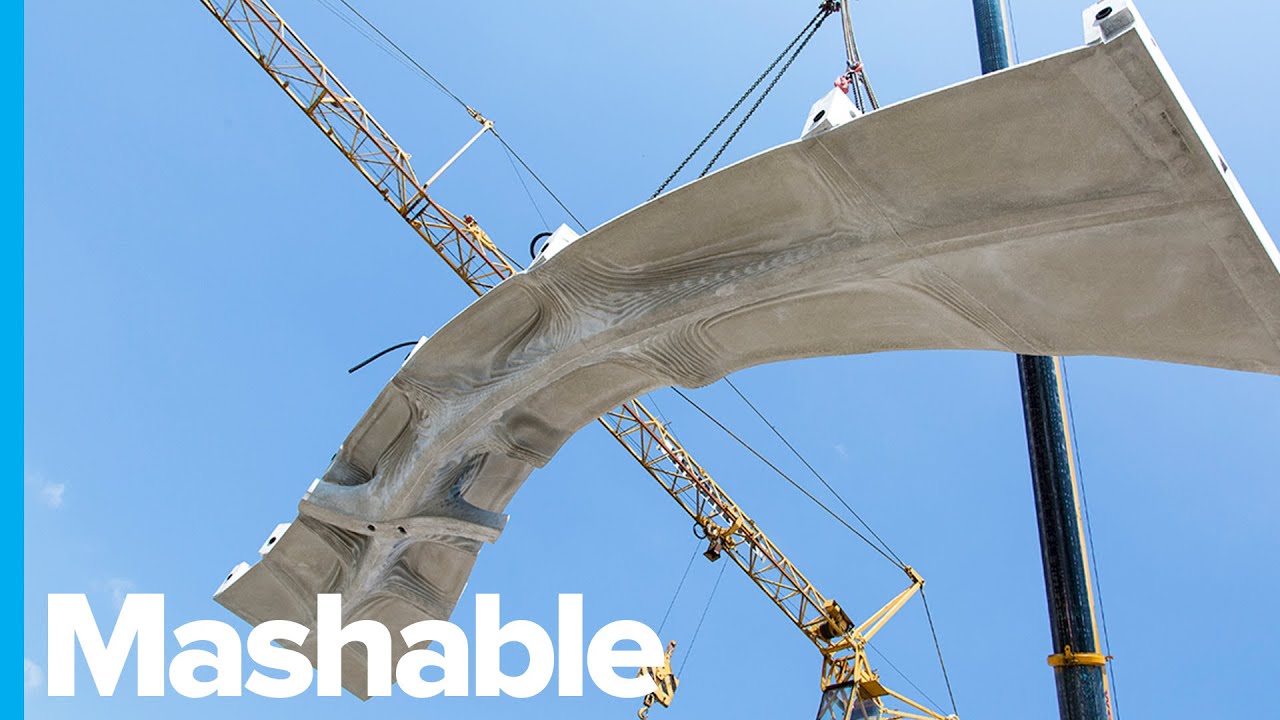Lightweight Structures - Innovations In Architecture
Lightweight structures refer to building designs that prioritize the use of lightweight materials such as tensile fabrics, composite materials, and lightweight metals to achieve strength and stability.
Author:George EvansApr 10, 202348K Shares739.8K Views

Lightweight structuresrefer to building designs that prioritize the use of lightweight materials such as tensile fabrics, composite materials, and lightweight metals to achieve strength and stability.
In recent years, architects have been exploring the use of lightweight structures in building design due to their numerous benefits.
This article will explore the advantages, applications, and innovations of lightweight structures in architecture.
Advantages Of Lightweight Structures
The use of lightweight structures in architecture offers several advantages, including:
Energy Efficiency
Lightweight structures have a lower embodied energy than traditional building materials like concrete and steel. They require less energy to manufacture and transport, which reduces the carbon footprint of a building.
Additionally, their lightweight nature reduces the amount of energy required to operate the building by minimizing the load on the foundation, which can reduce heating and cooling costs.
Cost-Effective
Lightweight structures are often cheaper to produce, transport, and install than traditional building materials.
The reduced weight of the materials leads to reduced costs in foundation construction and transportation, as well as faster installation times.
Aesthetic Appeal
Lightweight structures provide an opportunity for architects to experiment with innovative designs and create unique shapes and forms that are not possible with traditional materials.
The use of tensile fabrics, for example, allows for the creation of dramatic curves and organic shapes that can transform the appearance of a building.
Applications Of Lightweight Structures
Lightweight structures have been used in various building types, including:
Stadiums And Arenas
Stadiums and arenas often require large spans and lightweight structures are a great solution for achieving these without obstructing views.
The roof of the Maracana Stadium in Rio de Janeiro, for instance, is made of lightweight steel and PVC fabric that covers an area of 95,000 square meters.
Exhibition Halls
Exhibition halls and trade shows often require temporary structures that can be easily assembled and disassembled. Tensile fabrics are ideal for these applications as they are lightweight, flexible, and can be quickly assembled.
Public Spaces
Lightweight structures can be used to create temporary or permanent installations in public spaces such as pavilions and shelters.
The Serpentine Pavilion in London, for example, is a temporary lightweight structure made of tensile fabric that is installed in Kensington Gardens each summer.

Here's Why This Super Lightweight Concrete Slab Is The Future Of Architecture
Innovations In Lightweight Structures
The use of lightweight structures in architecture has spurred numerous innovations, including:
3D Printing
Advancements in 3D printing technology have enabled architects to create complex lightweight structures in a cost-effective and efficient manner.
The technology allows for the creation of intricate designs and customized components that can be manufactured on-site.
Bio-Inspired Design
Architects have started looking to nature for inspiration in creating lightweight structures.
The use of biomimicry in architecture has led to innovations such as tensegrity structures, which are inspired by the structural systems of biological organisms.
Smart Materials
The use of smart materials in lightweight structures has enabled architects to create structures that are self-sensing and responsive to their environment.
Shape memory alloys, for example, can be used to create structures that can change shape in response to temperature changes.
Lightweight Structures For Roofs
Lightweight structures have been gaining popularity in recent years for roofing solutions due to their numerous benefits.
They are known to be more affordable, easier to install, and require less maintenance compared to traditional roofing materials.
Here are some important points to consider when it comes to lightweight structures for roofs.
Benefits Of Lightweight Structures For Roofs
- Cost-Effective - structures are generally more affordable compared to traditional roofing materials like tiles, slate, or metal roofing. They are also easier and faster to install, which can save you labor costs.
- Easy Installation -The lightweight nature of these structures means that they are easier to install, and can often be done without requiring heavy machinery. This reduces the installation time and helps to minimize the disruption to your daily routine.
- Durability -Lightweight structures are often made from high-quality materials like PVC, TPO, or EPDM that are known for their durability and long lifespan. They are resistant to UV radiation, chemicals, and weathering, which helps to maintain their appearance and functionality for longer periods.
- Energy Efficient -Lightweight structures can also provide energy-saving benefits, as they have excellent insulation properties that help to reduce heat transfer. This can lead to lower heating and cooling costs, which can save you money in the long run.
Types Of Lightweight Structures For Roofs
- Membrane Roofing -This type of roofing system is made from a single-ply or multi-ply membrane that is typically made of PVC, TPO, or EPDM. It is known for its durability, flexibility, and energy efficiency.
- Metal Panels -Metal panels are made of lightweight steel or aluminum and are typically used for industrial or commercial roofing applications. They are known for their strength, durability, and ease of installation.
- Plastic Roofing -This type of roofing system is made from lightweight polycarbonate or fiberglass panels that are known for their durability, transparency, and energy efficiency. They are often used for greenhouses, sunrooms, or patio covers.
Considerations For Lightweight Structures For Roofs
- Building Codes -It's important to ensure that the lightweight structure you choose meets the building codes and regulations for your area. This will help to ensure the safety and durability of your roofing system.
- Maintenance Requirements -While lightweight structures require less maintenance compared to traditional roofing materials, they still need to be inspected and maintained regularly to ensure their longevity and functionality.
- Professional Installation -Lightweight structures for roofs should always be installed by a professional roofing contractor who has experience with this type of roofing system. This will help to ensure the proper installation and maintenance of your roofing system.
People Also Ask
What Are Some Examples Of Lightweight Structures In Architecture?
- Tensile structures made from lightweight fabrics, such as the tent-like structures at the Denver International Airport or the London 2012 Olympic Stadium.
- Geodesic domes, such as the iconic Epcot Center in Disney World.
- Lightweight timber structures, such as the Sainsbury Centre for Visual Arts in Norwich, UK.
- Cable-stayed bridges, such as the stunning Millau Viaduct in France.
What Are The Benefits Of Using Lightweight Structures In Construction?
Using lightweight structures in construction has numerous benefits, including:
- Reduced material and labor costs.
- Faster construction times.
- Increased energy efficiency.
- Reduced environmental impact.
- Enhanced aesthetic appeal and design flexibility.
- Improved durability and resistance to natural disasters.
How Do Engineers Determine The Strength Of Lightweight Structures?
Engineers use a variety of methods to determine the strength of lightweight structures, including computer modeling and physical testing.
They also take into account factors such as the materials used, the loads that the structure will bear, and the environmental conditions that it will be exposed to.
What Challenges Do Architects And Engineers Face When Designing And Building Lightweight Structures?
Designing and building lightweight structures presents several challenges, including:
- Ensuring structural stability and integrity.
- Achieving adequate insulation and climate control.
- Addressing issues related to fire safety and sound insulation.
- Meeting local building codes and regulations.
- Ensuring that the structure is resistant to natural disasters, such as earthquakes and high winds.
How Do Lightweight Structures Impact The Sustainability Of Buildings?
Lightweight structures can have a significant impact on the sustainability of buildings, as they often require less material and energy to construct and maintain than traditional structures.
Additionally, they can be designed to maximize natural lighting and ventilation, which can reduce the need for artificial lighting and climate control.
Final Words
The use of lightweight structures in architecture offers numerous benefits, including energy efficiency, cost-effectiveness, and aesthetic appeal.
Their versatility makes them a popular choice for various building types, from stadiums and arenas to public spaces.
Innovations in lightweight structures, such as 3D printing, bio-inspired design, and smart materials, are transforming the way architects approach building design, enabling them to create structures that are stronger, lighter, and more sustainable.

George Evans
Author
George Anderson, an exceptional architectural designer, envisions and brings to life structures that transcend the realm of imagination. With an unwavering passion for design and an innate eye for detail, George seamlessly blends form and function, creating immersive spaces that inspire awe.
Driven by a deep appreciation for the interplay of space, light, and materials, George's innovative approach redefines the possibilities of architectural design. His visionary compositions leave an indelible mark, evoking a sense of wonder and transforming the built environment.
George Anderson's transformative designs and unwavering dedication continue to shape the architectural landscape, pushing the boundaries of what is possible and inspiring generations to come.
Latest Articles
Popular Articles